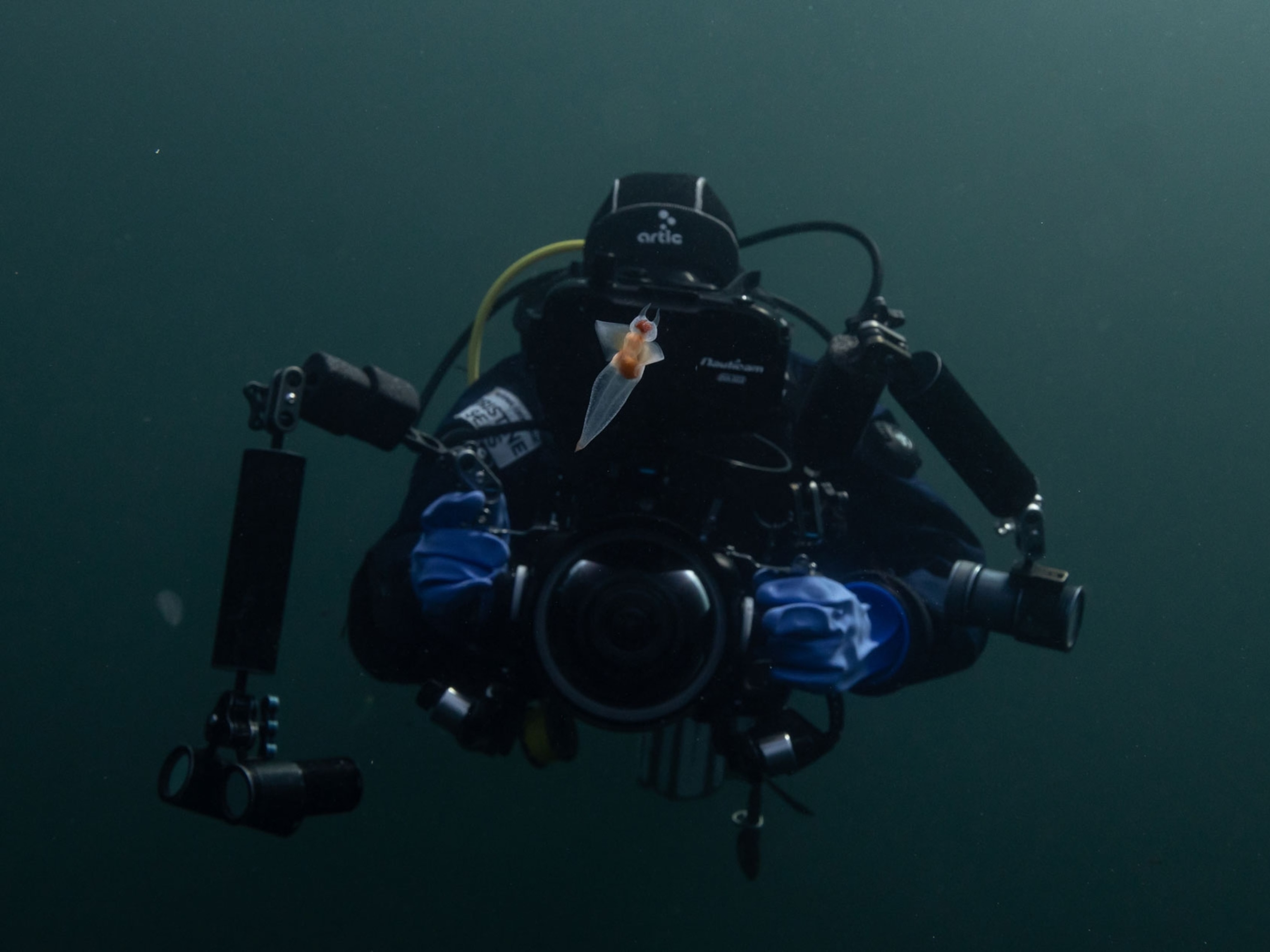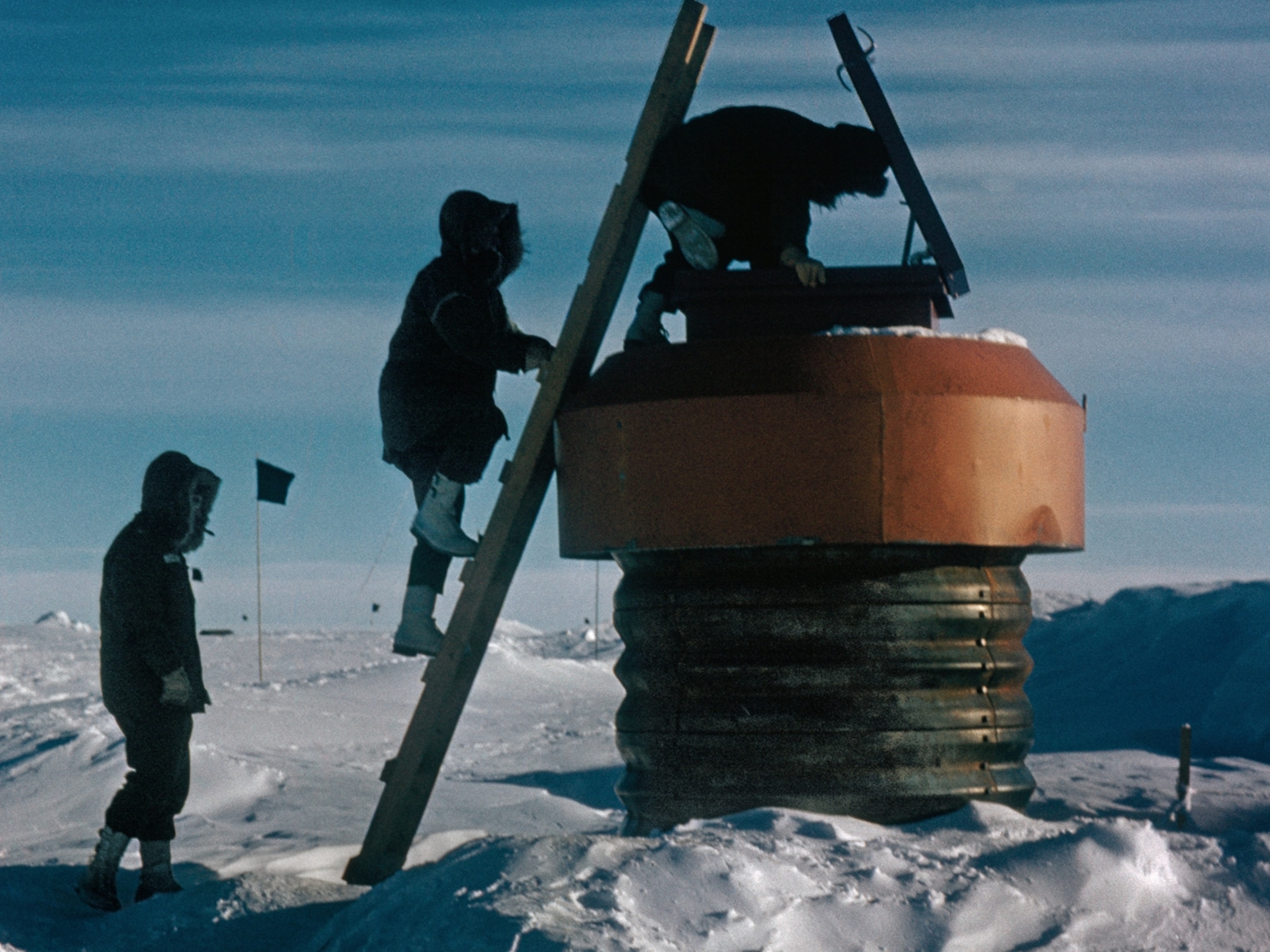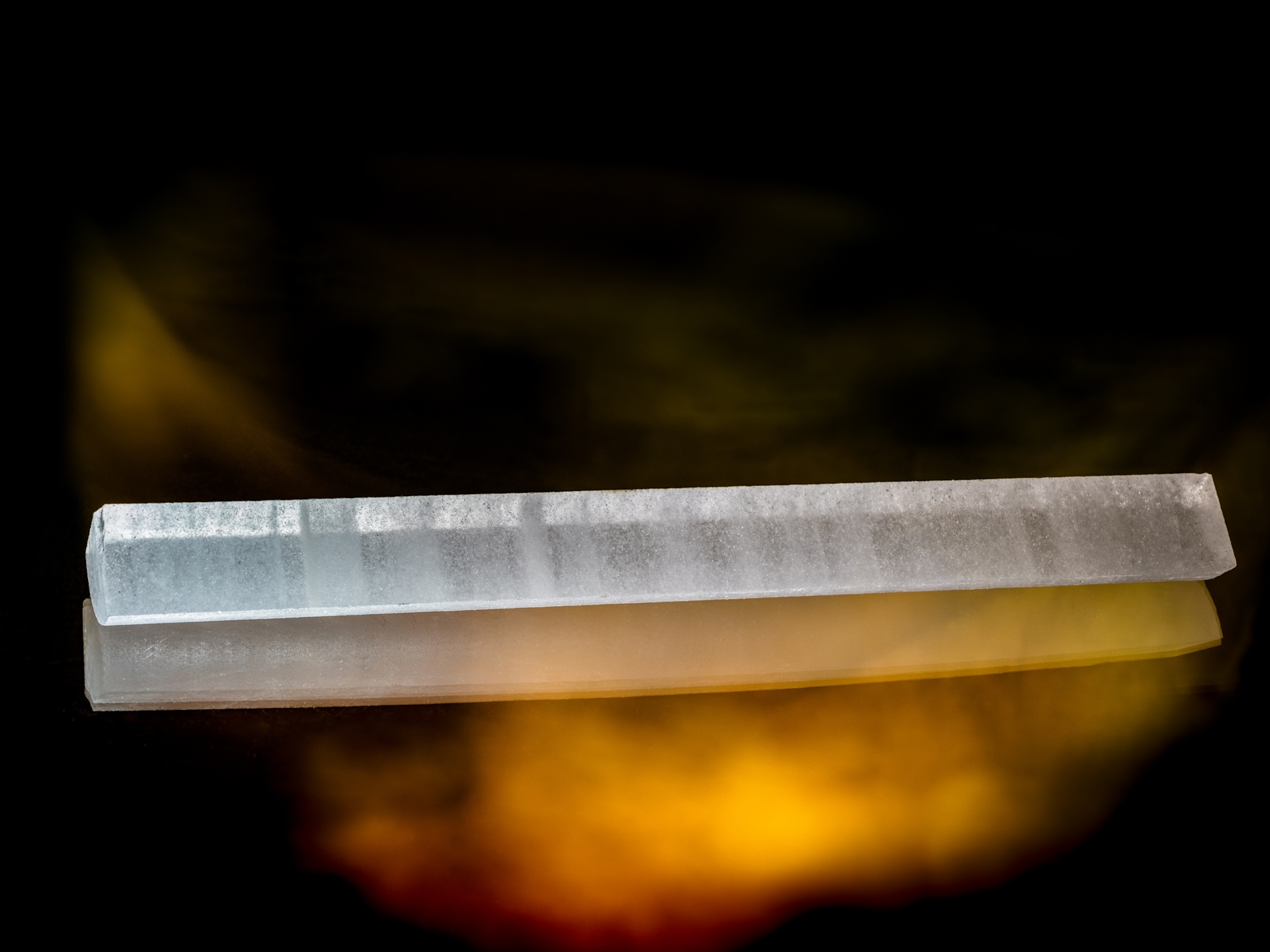
How Inuit avoid falling through thinning Arctic ice
The Arctic is melting, making it dangerous to take snowmobiles on the “ice highways” Inuits use to get around. A new sled-based ice-measuring system helps make travel safer.
On a sub-zero February morning, Rex Holwell mounted the snowmobile he rides every day to work, visit family, and run errands around Nain, a coastal town of 1,200 mostly Inuit residents in Labrador. That day he was headed on a 60-mile roundtrip to an area where many locals go to get firewood. Trailing behind his skidoo, as Canadians call it, was a sled with a mobile sensor that continually measured the thickness of the ice underneath him—to alert him when he might be in danger of falling through it.
Holwell is the northern production lead for SmartICE, a non-profit enterprise that pairs cutting-edge sensors and other technology with generations-old wisdom to help Inuit adapt to a warming planet. He manages the facility in Nain where physical components of the system are assembled, and he also travels the Arctic, training new users.
The Arctic is warming more quickly than anywhere on Earth: Its year-round temperature average is on track to warm 7.2F (4℃) by 2050. Arctic permafrost is quickly thawing. Arctic sea ice has already seen dramatic declines and by mid-century is predicted to be gone entirely in summer.
Many studies have looked at Arctic ice melt from the perspective of shipping companies, focusing on how new routes might become navigable as the ice wanes. There has been less attention to the threats the ice melt creates for small Arctic communities, or to how those dangers might be mitigated.


In 2010, a study conducted by Trent University and the local Nunatsiavut government found that 8 percent of respondents had fallen through the ice in the previous year, typically while crossing frozen seas, lakes, and rivers by skidoo. Some 31 percent reported getting stuck or stranded on their skidoo because of environmental conditions, and 68 percent reported being afraid to go on the ice.
The SmartQAMUTIK mobile sensor—qamutik means “sled” in Inuktitut, the Inuit language—was designed to change this.
How it works
The mobile sensor tracks ice thickness in real time by sending an electric current through the ice. Because sea ice and seawater have different electric properties, the current probes the distance between the sensor and where the water begins—that is, how thick the ice is.
The device alerts drivers via a steering wheel-affixed iPad when the ice is becoming too thin. But its purpose is not simply to warn individual drivers—it was created to help inform entire communities about safe travel routes, such as the route Holwell mapped to a local firewood source.
Twenty mobile SmartQAMUTIKs and 22 stationary SmartBUOYs have been deployed to gather ice thickness data in three of the four regions that make up the Inuit homeland in Canada: Nunavut, Nunatsiavut, and Inuvialuit. Once the trained SmartICE operator connects to WiFi, data gathered from the mobile and stationary devices are automatically funneled into a new app called SIKU, which means “sea ice” in Inuktitut.
Oral history has always been a strong part of the Inuit tradition, and SIKU blends satellite imagery and SmartICE sensor data with community knowledge of traditional travel routes, as well as weather and wildlife observations from hunters or other users who went on the ice recently.
After a SmartICE operator completes a skidoo run using the mobile sensor, a “run route” is uploaded to SIKU, which creates a graphic that uses colors to indicate varying degrees of ice thickness. Though only trained operators use the sensors, anyone in the community can access the run routes on SIKU; users can also attach photos, videos, and written descriptions.

Trevor Bell, a geographer with Memorial University in St. Johns, Newfoundland, and one of the founders of SmartICE, says they haven’t yet calculated the exact number of ice-related injuries and deaths the technology has helped avoid since the program launched in 2016. Bell says Inuit communities across Northern Canada have embraced the program, and SmartICE says both mobile and stationary ice sensors have been set up in 20 communities to date, with three more planned this season.
SmartICE reports that its operators often receive calls from community members seeking information about a specific route that they’re nervous about attempting. In some cases, they’ve already tried the route, but had to turn back because the ice seemed too thin to continue. Once a SmartICE operator goes out with the monitoring equipment to ride and track the questionable route, others know it’s safe when they see the run route posted on SIKU.
Access to mobile devices and dependable internet connections has slowly been increasing across Inuit Canada—Nain got cell service in 2019—but many households still don’t have a reliable connection. To ensure the ice thickness information reaches as many people as possible, SmartICE asks its mobile sensor operators to take screen shots of their runs and post them on whatever is the most popular online community channel, such as a local Facebook bulletin board.
Color copies of the runs are also printed and hung in the most frequented locations, such as post offices, general stores, and supermarkets, which in small villages might all be the same place. In some communities, operators also send run information to local search-and-rescue teams, hunting and trapping organizations, and any other group that could help get the word out.

Changing times for traditional knowledge
Technology has made it easier to share information about ice thickness, but Holwell says the sensors aren’t meant to replace traditional knowledge. Dangerous ice can be hard to predict, and someone without extensive ice experience may not recognize the different stages of melt. Even travelers with extensive Indigenous knowledge can fall through the ice.
“The qamutiks are a tool to use with traditional knowledge, and we warn users to not rely only on the screen,” Holwell says. SmartICE only hires sensor operators who have significant experience reading ice with their own eyes. As for community members using the run routes generated by SmartICE operators, they, too, “should know traditional routes and have some familiarity with the ice,” he says.
Bell says that English only uses about a dozen terms to describe ice, and most have to do with commercial shipping and ice breaking. Inuit have about 65 words for different types of ice. Bell says Inuit elders, recognizing that knowledge about ice and the land is no longer being passed on to younger generations sufficiently, have asked SmartICE to help them document it.
“Thirty or 40 years ago, everyone in the community would have been familiar with these terms because they were out on the land more with their families,” Bell says.
The ice monitoring program also capitalizes on the community’s strengths. SmartICE hires operators that are deeply familiar with the land and ice patterns, then pairs them with tech-savvy people as young as 16 who are eager to absorb traditional knowledge. These youth operators help build, calibrate, and test the devices on the ice, and also help to design and distribute promotional materials that raise awareness and understanding of the program.
SmartICE “has trained and employed 15 youth in our community so far,” says Julius Dicker, mayor of Nain. “These youth had many barriers to employment and are now either upgrading their schooling, attending college, working at a local businesses or are continuing to work with SmartICE in the production center and ice monitoring.”
According to Andrew Arreak, SmartICE’s operations lead in Pond Inlet, Nunavut, sea ice is his community’s “main highway” to get to hunting and harvesting grounds and to travel to other communities. Without safe ice, many Inuit would also be unable to access cabins, campgrounds, and sacred lands where they’ve sought refuge and relaxation for generations.
“The sea ice is our identity,” says Arreak, adding that his community is thrilled to have new tools to help preserve this identity for generations to come.
Says Dicker: “It’s very reassuring to know where the ice is safe to travel on, as days get longer and spring fever starts to take over.”








